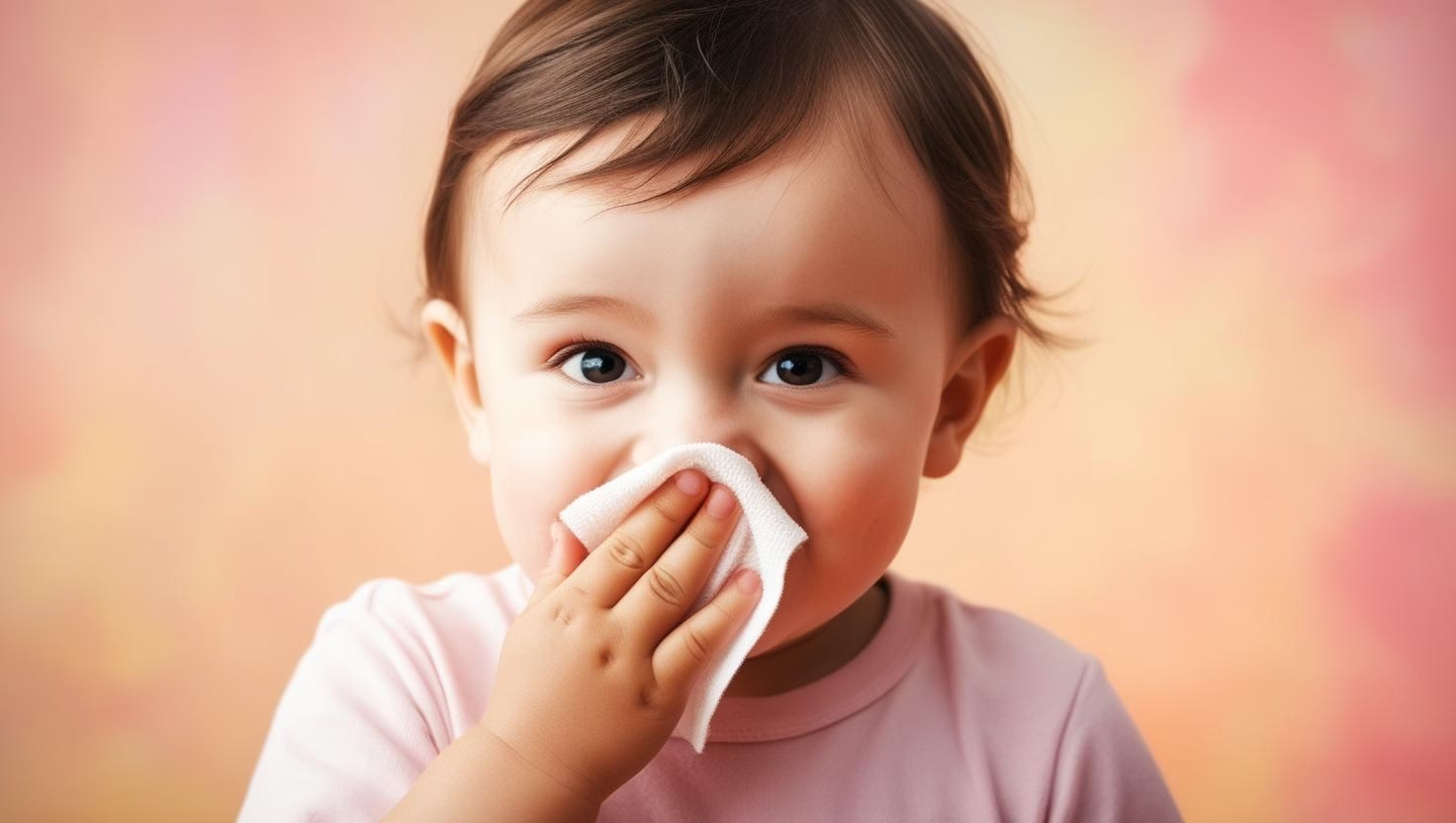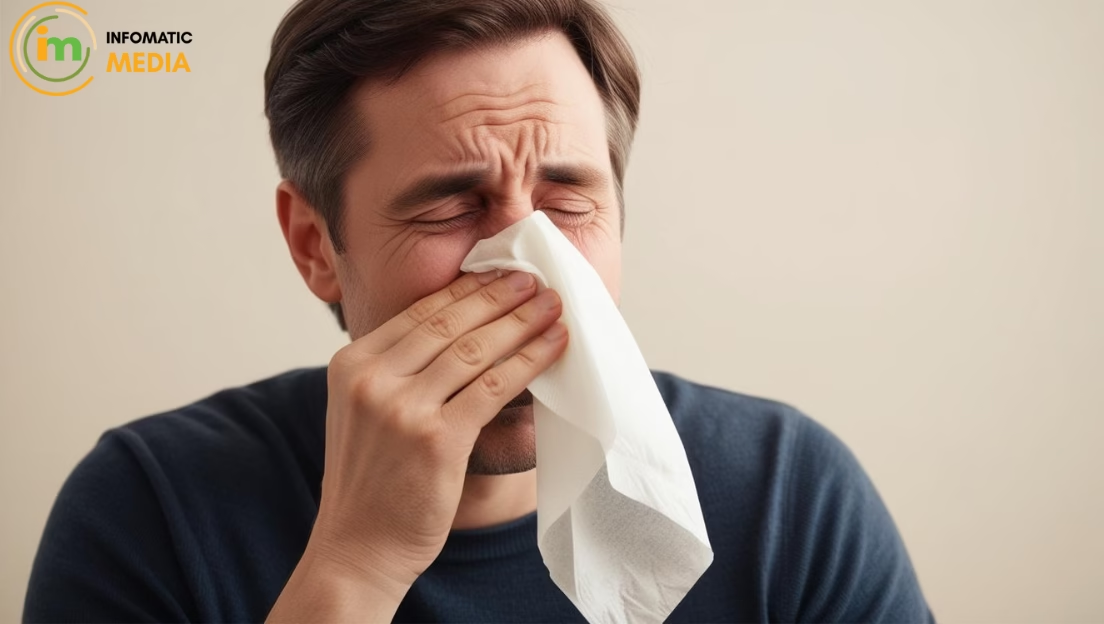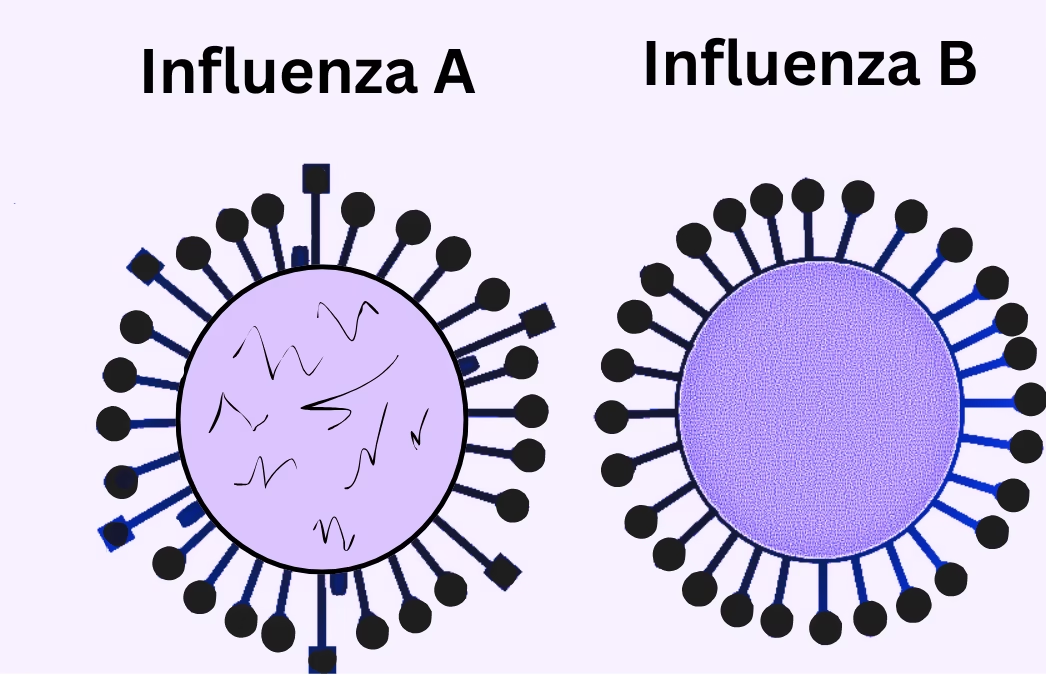Introduction:
Influenza (the flu) is a contagious virus that mainly targets the respiratory system. It spreads quickly from person to person and can range from mild to severe symptoms. The flu is most common during colder months, particularly winter, and is often called the seasonal flu. Knowing the symptoms, types, and treatment options for the flu is key to staying healthy during flu season.
This blog will dive into the seasonal flu, covering symptoms like whether the flu causes vomiting, how to treat it at home, the differences between Influenza A and B, and the best ways to prevent it.
What is Influenza?
Influenza, or the flu, is caused by viruses that impact the respiratory system, including the nose, throat, and lungs. It spreads mainly through droplets when an infected person coughs, sneezes, or talks. You can also catch it by touching contaminated surfaces and then touching your face.
There are three main types of influenza:
- A: The most common and severe strain, causing most flu cases and pandemics.
- B: Similar to A but less severe, usually limited to seasonal outbreaks.
- C: A milder strain that affects only a small number of people.
Flu season typically peaks during winter, so it’s crucial to recognize the symptoms and know how to manage the flu.
Why is Flu Season Tied to Winter?
Flu season is linked to colder months for a few reasons:
- Lower Humidity: Cold, dry air helps flu viruses survive longer in the environment.
- Indoor Crowding: People spend more time indoors in winter, making it easier for the virus to spread.
- Weakened Immune System: Less sunlight and colder weather can lower Vitamin D levels, weakening immunity and making you more susceptible to illness.
These factors contribute to why flu outbreaks are more common in winter, typically lasting from December to February.
Flu Symptoms and Treatment
The flu can strike suddenly and often feels worse than a common cold. If you’re wondering whether the flu can make you vomit, or what the typical symptoms are, here’s what to expect:
- High fever or chills
- Dry, persistent cough
- Sore throat
- Runny or stuffy nose
- Body aches and fatigue
- Headache
- Nausea or vomiting (more common in children)
In severe cases, symptoms like dizziness or fainting may occur due to dehydration or extreme fatigue. If you’re asking, “Can the flu cause fainting?” Yes, it’s possible, especially if you’re not hydrating or resting enough. Be sure to drink plenty of fluids and get enough sleep to avoid complications.
Can the Flu Make You Throw Up?

Yes, vomiting is more common in children with the flu than in adults. While adults may experience some stomach discomfort, vomiting is less frequent. If vomiting happens, staying hydrated is crucial. Drink water, clear broths, or oral rehydration solutions to replace lost fluids and prevent dehydration.
Influenza A vs. Influenza B: Home Treatment
The symptoms and treatments for Influenza A and B are quite similar, but Influenza A tends to be more aggressive. Both strains can be managed at home with rest, hydration, and symptom relief.
Influenza A Home Treatment:
- Rest: Get plenty of sleep to help your body fight the virus.
- Hydration: Drink fluids like water, tea, and soup.
- Over-the-counter (OTC) Medications: Use acetaminophen (Tylenol) or ibuprofen (Advil) to reduce fever and ease aches.
- Steam: Use a humidifier or take warm showers to ease congestion.
Influenza B Home Treatment:
- Rest & Hydration: Similar to Influenza A, rest and fluids are key.
- Symptom Relief: OTC medications can help manage pain and fever.
- Honey & Ginger: Honey soothes a sore throat and calms coughing, while ginger helps reduce inflammation and body aches.
How to Recover from the Flu Fast at Home
Though there’s no instant cure for the flu, these tips can help reduce symptoms and speed up recovery:
- Rest: Your body needs time to fight the infection, so rest is essential.
- Hydration: Drink water, herbal teas, or broths to stay hydrated and relieve symptoms.
- OTC Medications: Use pain relievers like ibuprofen or acetaminophen to ease discomfort.
- Saltwater Gargle: Gargling with warm salt water can relieve a sore throat.
- Steam Therapy: Inhaling steam or using a humidifier can ease congestion and reduce coughing.
Preventing the Flu
The best way to avoid the flu is through prevention. Here’s how you can protect yourself:
- Get the Flu Vaccine: The flu shot is the most effective way to prevent infection. It’s updated annually to target the most common strains.
- Wash Your Hands: Wash your hands often, especially after touching public surfaces or coughing and sneezing.
- Avoid Sick People: Stay away from those who are ill, and if you’re sick, stay home to avoid spreading the flu.
- Disinfect Surfaces: Regularly clean common touch areas like doorknobs, light switches, and phones.
Managing Flu Symptoms During the Coughing Season
Winter often brings the “coughing season,” with respiratory illnesses like the flu. To manage a persistent cough from influenza, try these remedies:
- Honey & Lemon Tea: Honey and lemon both have soothing effects that can calm a cough.
- Steam Inhalation: Use a humidifier or take a hot shower to add moisture to the air and ease coughing.
- Ginger Tea: Ginger helps reduce throat irritation and inflammation, easing coughing.
Fun Flu Facts
- The Flu Mutates: Influenza viruses constantly change, which is why you need a new vaccine each year.
- The 1918 Spanish Flu: One of the deadliest pandemics, it infected a third of the world’s population and caused millions of deaths.
- Flu & Animals: The flu doesn’t just affect humans—animals like pigs and birds can also catch the flu, which is why flu strains are monitored in agriculture.
Conclusion
Seasonal flu is common, especially in winter when outbreaks peak. Understanding the symptoms, knowing the differences between Influenza A and B, and being aware of effective home treatments can help you manage the illness better.
Prevention is key: the flu vaccine, good hygiene, and avoiding close contact with sick individuals are the most effective ways to protect yourself. If you do get sick, rest, hydrate, and manage symptoms with the right treatments.
Stay safe, stay informed, and take care of your health during flu season!






One thought on “Influenza Symptoms and Treatments”